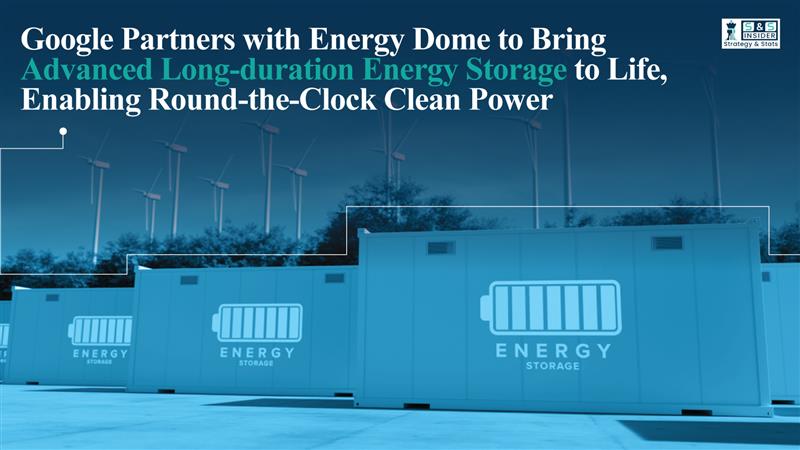
Google has strategically collaborated with Energy Dome, a leading energy storage company, to deploy innovative long-duration energy storage (LDES) technology, enabling 24/7 renewable energy solutions throughout Google's global operations. This collaboration marks Google's first foray into the LDES market and is crucial to the company's ambitious goal of running totally on carbon-free energy (CFE) by 2030.
The innovative CO2 Battery, a novel long-duration energy storage system that uses a closed-loop thermodynamic mechanism to store energy using carbon dioxide, is Energy Dome's fundamental technology. When there is an excess of renewable energy output, such as when solar and wind yields are high, the CO2 battery compresses and liquefies CO2 gas. When energy demand exceeds renewable supply, the device expands and evaporatively converts liquid CO2 back into gas, which drives turbines to generate electricity. This technique effectively overcomes the shortcoming of renewable energy sources including solar and wind by storing energy for 8 to 24 hours and releasing it when needed.
The Energy Dome system is a thermodynamic, closed-loop system that consists of a compressor, turbine, and gas container. The physical properties of CO2 are used to efficiently and affordably store energy as fossil fuel facilities retire and are replaced by renewable energy sources. Its rotating machinery also contributes natural mechanical inertia, which is essential for grid stability.
The need for reliable, long-term storage systems that can reliably provide stable and carbon-free electricity beyond the shorter storage periods provided by technologies including lithium-ion batteries is a major barrier in the clean energy transition that this strategy addresses. Energy Dome's CO2 battery is perfect for enhancing grid stability and balancing networks across daily cycles since it can provide consistent power for a far longer period of time than lithium-ion batteries, which can only store energy for up to four hours.
This partnership supports Google's overall strategy, which combines LDES with a range of cutting-edge energy technologies, including enhanced geothermal, advanced nuclear, and fusion, to meet the increasing demand for electricity from operations, including data centers and AI computing. By allowing additional sustainable energy capacity on the grids where Google operates, the partnership should hasten the transition to carbon-free electricity and reduce reliance on fossil fuels.
As part of its commercial partnership, Google supports multiple deployment projects globally, including in Europe, the U.S., and Asia Pacific. In addition to this commercial agreement, Google has made a strategic, albeit secret, investment in Energy Dome, indicating its confidence in the technology's scalability, maturity, and critical role in delivering clean energy that is available 24/7 and grid resilience.
In conclusion, the collaboration between Google and Energy Dome marks a significant step forward in the widespread commercial use of long-duration energy storage technology. Because of its longer storage duration, lower environmental impact, and enhanced grid stability, CO2 battery technology offers a promising alternative to lithium-ion batteries for supplying large energy consumers with carbon-free electricity around-the-clock.
Source – Energy Dome